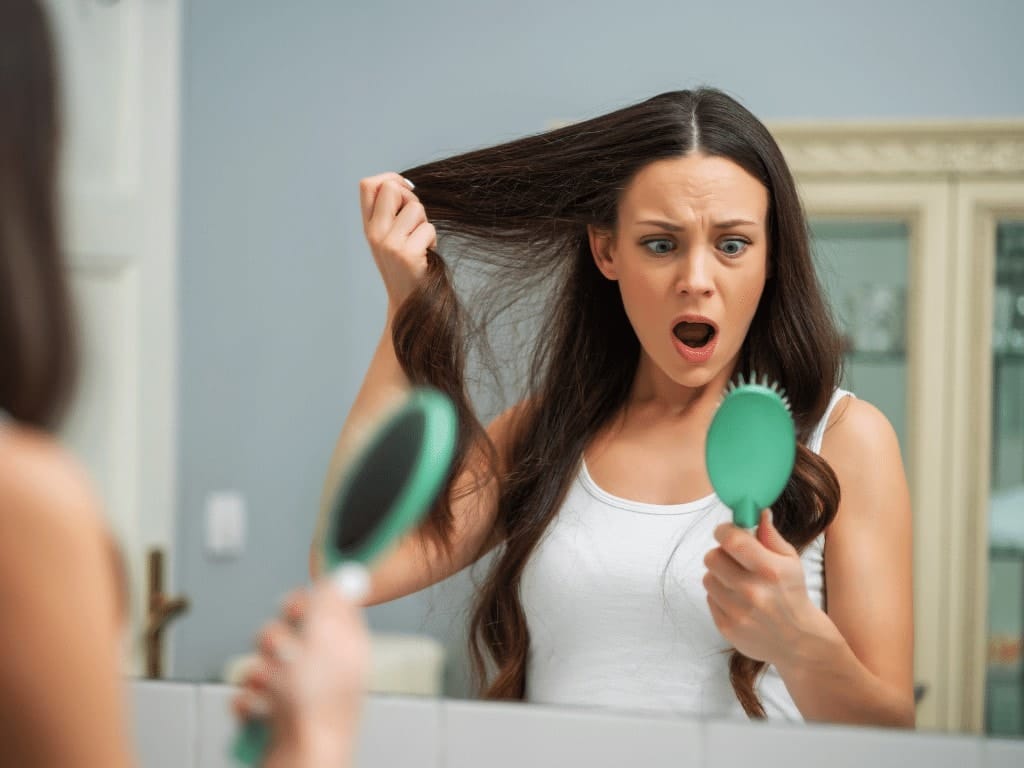All You Need to Know about Alopecia Areata [for Women]
It affects approximately 6.8 million men and women in America, and more across the world. For many people, the baldness isn’t anything more than several spots, however, in some situations, it may be more intense. The condition can affect anyone irrespective of age and sex, though most instances happen before age 30. In this guide by Tropika Club, we take a look at the symptoms and causes of alopecia areata, hair loss and thinning hair for women, its identification, and possible remedies.
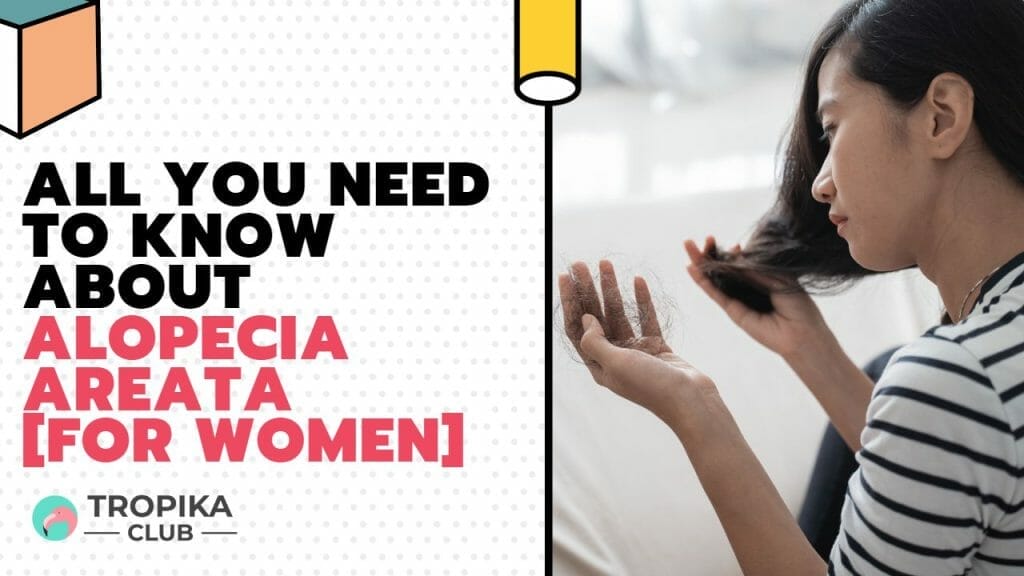
Table of Contents
- No Time to Read? Here’s a Snappy Summary of This Article
- What are the Causes of Alopecia Areata?
- What are the Symptoms of Alopecia Areata?
- How is Alopecia Areata Diagnosed?
- How is Alopecia Areata Treated?
- Conclusion
- HairGrow™ 3X Ultimate Hair Loss Treatment
- Why Choose HairGrow™ 3X to Treat My Hair Loss?
- Book Now Pay Later
- Meanwhile, Check Out Tropika Club’s Ecosystem of Websites
No Time to Read? Here’s a Snappy Summary of This Article
- Alopecia Areata is an autoimmune disease that causes hair loss on the scalp and other parts of the body.
- It affects approximately 6.8 million men and women in America and more across the world.
- For many people, the baldness isn’t anything more than several spots, however in some situations it may be more intense.
- The condition can affect anyone irrespective of age and sex, though most instances happen before age 30.
What are the Causes of Alopecia Areata?
It’s unknown precisely what causes the body’s immune system to target hair follicles this manner. While scientists are uncertain why these changes occur, it seems that genetics is called alopecia areata is more likely to happen in a person who has a close relative with the disease. One in five people with the disease has a relative who has also developed alopecia areata.
Other research has discovered that lots of people with a family history of alopecia areata have a family or personal history of other autoimmune disorders, such as atopy, a disease characterised by a tendency to be more hyperallergic, thyroiditis, along with vitiligo.
Despite what many men and women think, there is very little scientific evidence to support the view that alopecia areata is caused by anxiety. Extreme instances of stress could potentially trigger the condition, but most recent research points toward a genetic origin.
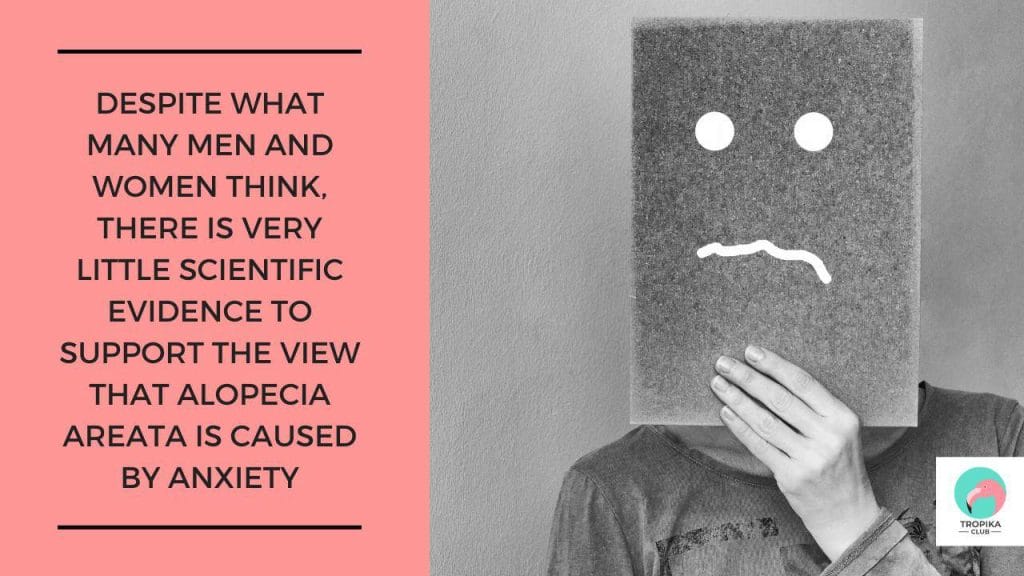
What are the Symptoms of Alopecia Areata?
The most prominent symptom of alopecia areata is patchy hair loss. Coin-sized patches of hair begin to fall out, largely in the scalp. Any website of hair growth may be affected, however, including the beard and eyelashes. The loss of hair can be abrupt, developing in just a few days or within a span of a few weeks. There might be itching or burning in the area before hair loss. The hair follicles aren’t ruined and so hair may re-grow if the inflammation of those follicles subsides. People who undergo just a couple of patches of baldness frequently have a spontaneous, full recovery without any treatment.
Approximately 30 per cent of individuals who grow alopecia areata find that their condition either becomes extensive or becomes a continuous cycle of hair loss and regrowth. About half of patients recover from alopecia areata within one year, but a lot of them will undergo more than 1 episode. Approximately 10% of people may go to develop alopecia totalis or alopecia Universalis.
Suffering from an Allerygy? Read about how to Effectively Deal with Your Allergy.
Alopecia areata can also affect the toenails and fingernails, and sometimes these changes will be the first sign that the condition is growing.
- pinpoint dents appear
- white spots and lines appear
- nails become rough
- nails lose their shine
- nails become thin and split
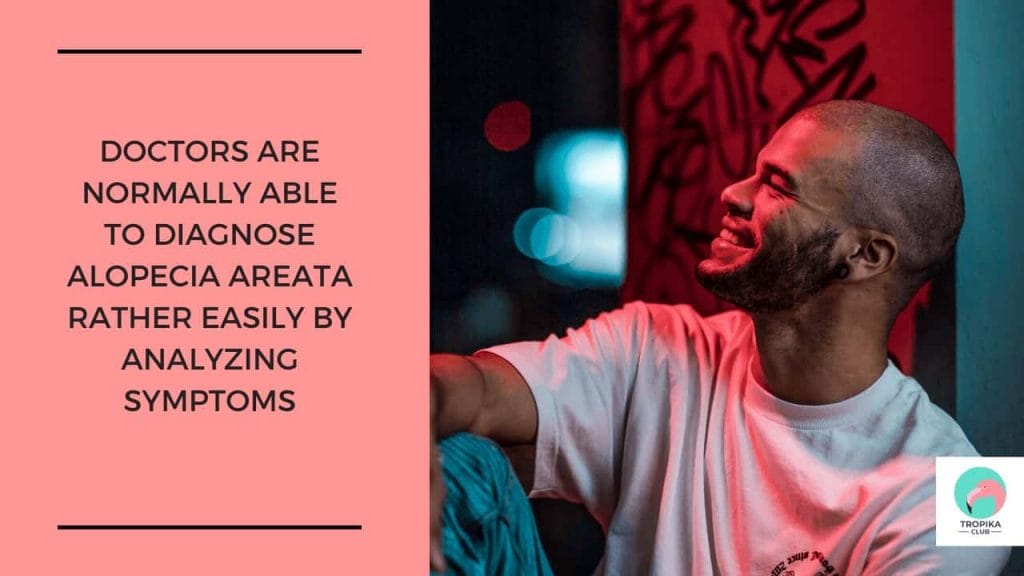
How is Alopecia Areata Diagnosed?
Doctors are generally able to diagnose alopecia areata rather quickly by analysing symptoms. They may take a look at the level of baldness and examine hairs from affected regions beneath a microscope. If following a preliminary clinical evaluation, the physician isn’t able to earn a diagnosis, they could conduct a skin biopsy. Should they need to rule out other autoimmune disorders, they may do a blood test.
As the indicators of alopecia areata are so distinctive, creating a diagnosis is generally straightforward and quick.
How is Alopecia Areata Treated?
There’s presently no treatment for alopecia areata, even though there are a few kinds of therapy which could be suggested by physicians to assist hair re-grow faster. The most common type of alopecia areata therapy is using corticosteroids, effective anti-inflammatory drugs that may suppress the immune system. All these are largely commonly handled through local injections, topical ointment program, or orally.
Other medicines which may be prescribed that promote hair growth or influence the immune system comprise Minoxidil, Anthralin, SADBE, and DPCP. Even though some of them may assist with the regrowth of baldness, they can’t prevent the creation of new bald spots. The usage of photochemotherapy is supported by some research and presents a possible choice for individuals unable or reluctant to utilise invasive or systemic therapies.
Conclusion
If you are suffering from alopecia, there is no need to despair. People of all ages, both sexes and all ethnic groups can develop alopecia areata. It often first appears during childhood and can be different for everyone who has it. There are several means and ways to treat it, so the main thing is the detect it early and treat it from the onset of alopecia. Good luck!
HairGrow™ 3X Ultimate Hair Loss Treatment
- ⭐ Supercharged Regrowth: HairGrow™ 3X is a premier plan, designed for those who desire to accelerate their hair regrowth process and address hair loss swiftly.
- ⭐ Adaptable Treatment Choice: This plan has been carefully crafted to provide customers with complete autonomy in selecting their preferred treatments.
- ⭐ Personalized Selection: This package allows customers to choose any three treatments from an extensive range of hair loss solutions, thereby tailoring their plan based on individual requirements.
- ⭐ Balancing Value & Variety: HairGrow™ 3X offers an exceptional combination of affordability and options – it enables access to premium treatments at a notably discounted rate..
- ⭐ Free Supply of Minoxidil. HairGrow™ 3X also includes a monthly supply of Minoxidil with Royal Jelly to jumpstart hair growth.
Why Choose HairGrow™ 3X to Treat My Hair Loss?
We highly recommend HairGrow™ over the individual treatments for the following reasons:
- ✅ Scientifically Proven. HairGrow™ 3X maximizes efficacy and results based on scientific case studies.
- ✅ Personalized Approach: HairGrow™ 3X provides a custom solution to your hair loss, allowing you to choose three treatments that best fit your needs and preferences.
- ✅ Affordability & Premium Quality: This plan combines the benefits of premium quality treatments and affordability, providing you with a cost-effective solution for your hair loss.
- ✅ Supercharge Hair Regrowth. Plan is ideal for customers seeking to supercharge hair regrowth.
- ✅ Flexible and Adaptive: The plan’s structure provides flexibility, allowing adjustments as per your progress or changes in your hair loss condition.
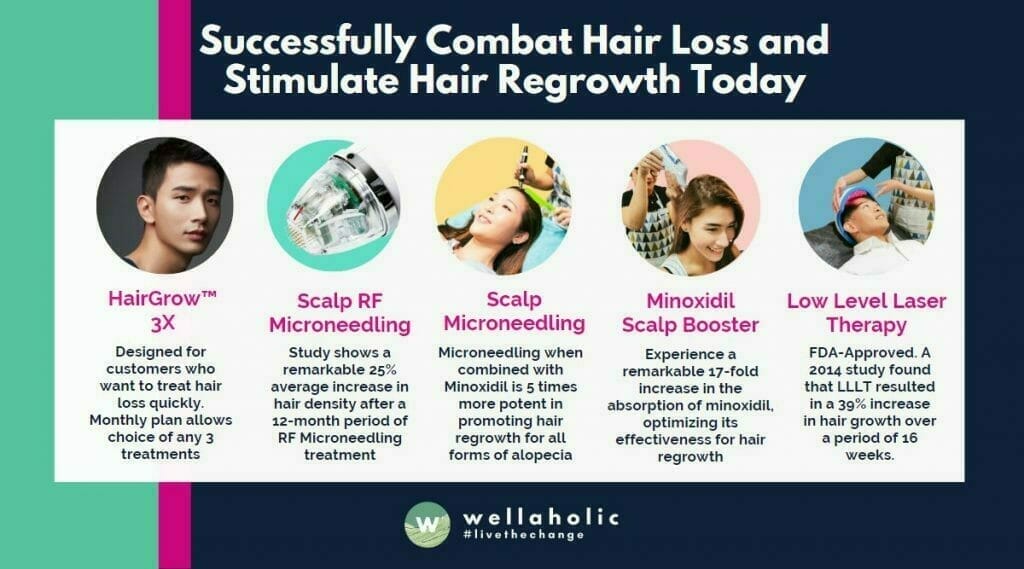
GET IN TOUCH
Book Now Pay Later

Frequently Asked Questions (FAQ)
Q: What is alopecia areata?
A: Alopecia areata is an autoimmune condition that causes hair loss, typically in patches on the scalp. It occurs when the immune system mistakenly attacks the hair follicles, leading to hair loss.
Q: What are the symptoms of alopecia areata?
A: The most common symptom of alopecia areata is the sudden onset of round or oval patches of hair loss on the scalp. In some cases, it can also affect eyebrows, eyelashes, and other body hair. It is not accompanied by itching or pain.
Q: Can alopecia areata affect women?
A: Yes, alopecia areata can affect women of all ages. It is not limited to a specific gender and can occur in both men and women.
Q: What causes alopecia areata?
A: The exact cause of alopecia areata is still unknown, but it is believed to be an autoimmune disorder. Genetic factors, environmental triggers, and certain medical conditions may contribute to its development.
Q: Is alopecia areata treatable?
A: While there is no cure for alopecia areata, there are treatment options available to help manage the condition. These may include topical medications, corticosteroid injections, immunotherapy, or hair transplant procedures, depending on the severity and extent of hair loss.
Q: Are there any natural remedies for alopecia areata?
A: Although there is limited scientific evidence supporting the effectiveness of natural remedies, some people have reported positive results with certain approaches. These may include essential oils, scalp massages, acupuncture, and dietary changes. It is important to consult with a healthcare professional before trying any natural remedies.
Q: How can I prevent hair loss from alopecia areata?
A: Unfortunately, there is no known way to prevent alopecia areata. However, maintaining overall good health, managing stress levels, and following a balanced diet can contribute to the well-being of your hair and scalp.

Have an Article to Suggest?
Tropika Club is always looking for new and exciting content to feature in their magazine and they value the input of our readers. If you have any noteworthy content or articles that you believe would be a great addition to Tropika Club’s magazine, we are open to suggestions and encourage you to reach out to us via email at [email protected]. By doing so, Tropika Club values your expertise and knowledge in the matter and appreciates your willingness to help. We will review your recommendations and update our list accordingly
Meanwhile, Check Out Tropika Club’s Ecosystem of Websites

Tropika Club Magazine – Tropika Club Magazine is a Singapore-based publication that features articles on a wide range of topics with a focus on local businesses and content for the region. The magazine emphasizes supporting local businesses through its #SupportLocal initiative, which includes coverage of everything from neighborhood hawker stalls to aesthetic clinics in town. In addition to highlighting local businesses, Tropika Club Magazine also covers a variety of local content, including beauty, lifestyle, places, eats, and what’s on in Singapore and the Asia Pacific region.
Tropika Club Deals – Tropika Club Deals is a leading online deals and voucher shopping site in Singapore, offering amazing discounts on beauty, wellness, and fitness products and services. It’s the perfect platform for customers who want to discover the best deals without having to commit to a specific appointment date and time. These deals are available at major beauty stores, facial salons, hair salons, and other brands in Singapore, with no minimum spend required. Choose from guaranteed discounted deals in the categories of hairstyling, hair removal, facial & aesthetics, body slimming, brows & lashes, nails & makeup, massage & spa or fitness & wellness. Tropika Club Deals is also ideal for customers who want to buy vouchers as gifts or to use for the future. So whether you’re looking to save money on your next haircut or want to treat yourself to a relaxing massage, Tropika Club Deals has got you covered with the best voucher and coupon deals in Singapore!



